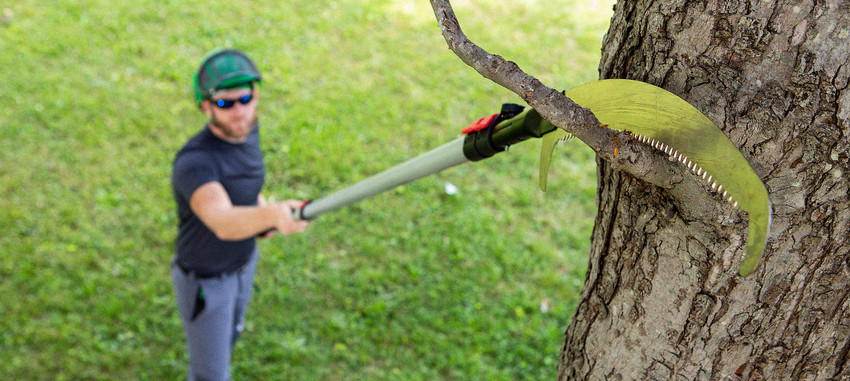TFTC #43 5 tips for talking to customers about proper pruning
Sherrilltree Apr 16th 2025It doesn’t matter if you’re a solo operator or part of a large crew, every job starts with a customer conversation. Don’t dread the conversation—it’s the only way to learn exactly what the customer wants. It’s also the best time to share your thoughts on the impact of the work and answer any questions about what you recommend.
The conversations don’t need to be difficult, particularly if you focus on two priorities: Understanding the request, and clearly explaining the result. These five tips can help make sure both happen.
1. Watch their hands.
Most customers don’t talk about trees very often, so they have a hard time sharing their vision for how a tree should be pruned. After asking them to lead you to the tree (which helps to set the tone for the conversation), ask them to share their vision with you—and keep an eye on their hands while they talk. Most customers won’t know professional terminology, but they will often indicate shapes or other ideas with their hands or body language while they talk. These signals can give you a good idea of what they’re really looking for, which you can then share back to them for a response. The key here: Keep your language straightforward. You want to show that you know what you’re talking about, but using too much professional jargon can lead to confusion. Write down or otherwise record the details of what you learn.
2. Keep quiet and listen.
When the customer is explaining the work to be done, why they want it done, and what their concerns are, it’s your time to listen and take notes—not talk. Wait for them to be completely done sharing their reasoning before you respond. Sometimes the real reasoning, question or concern isn’t shared until later in the conversation. Sometimes it’s because the customer hasn’t completely thought through what they want until you’re standing at the tree together. Be patient.
3. Get specific with a green laser pointer.
Let’s say a client wants to reduce the interior canopy, raise a branch level, or prune a tree away from a house. With a green laser pointer, you can clearly show exactly what you will cut and how the process will work. (The green stands out, where red can get lost in daylight.) The laser pointer can also make for an efficient conversation when it comes to additional cuts that could help balance the work you’re doing—making it easy to point out changes you recommend for aesthetic reasons or showing areas of potential concern. Remember, homeowners don’t have a trained eye, so they need guidance that’s as specific as possible. You can always hand the laser pointer to them so they can share their ideas, too.
4. Provide clear guidance.
Always show respect to the customer and the work they want done—after all, it’s their tree and they can do what they want (unless local ordinances say otherwise). But once they fully share their vision, it’s time for you to share your recommendation and/or the impacts of the work. For example, it’s best to prune when the tree is dormant (in winter) unless there is an emergency reason to remove branches. If a tree splits into two stems and the customer wants to remove a whole stem, explain that it could be harmful and could lead to greater costs down the road to remove the whole tree. Then, offer alternative recommendations that can help deliver what the client wants without severely damaging the tree. Just because you can easily envision various scenarios doesn’t mean the customer can. Be clear and thorough.
5. Remember you can say no.
Sometimes you’re not going to hit it off with a customer, whether it’s because of the request—like turning a healthy tree into a bare-limbed wildlife snag—or because of a personality conflict. Instead of giving the “I don’t want it” price where you overprice the work and hope they say no, simply tell them that you’re not a good match for what they want done. Your integrity matters, and it’s okay to turn down work (or customers) you aren’t comfortable with.
Footnote: Thanks to Adam Servin, President of ATS Tree Services LLC (www.treehelp.net), for providing his expertise for this article..

